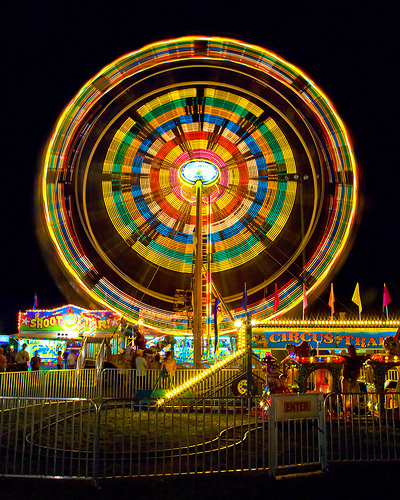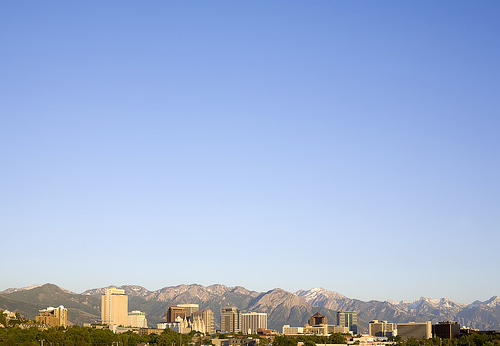August 3, 2007
]]> 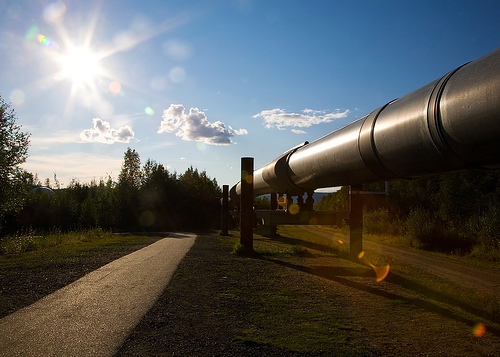
The main Trans-Alaska Pipeline runs north to south, almost 800 miles (1,300 km), from the Arctic Ocean at Prudhoe Bay, Alaska to the Gulf of Alaska at Valdez, Alaska, passing near several Alaskan towns, including Wiseman, Bettles, Livengood, Fox, Fairbanks, and Glennallen.
Construction of the pipeline presented significant challenges due to the remoteness of the terrain and the harshness of the environment it had to pass through. Between Arctic Alaska and Valdez, there were three mountain ranges, active fault lines, miles of unstable, boggy ground underlain with frost, and migration paths of caribou and moose. Geological activity has damaged the pipeline on several occasions.
Since its completion in 1977, the pipeline has transported over 15 billion barrels (2.4 km3) of oil.
LeggNet’s Digital Capture
© Rich Legg, Inc. All rights reserved.
August 3rd, 2007 12:00 am | Comments Off on Trans Alaska Pipeline
August 1, 2007
]]> 
As I said in an earlier post on the subject, it will be interesting to see how my sales grow in the future. You can view my iStock portfolio HERE.
Canon 5D, Canon 24-105 f/4L lens – 1/60 second, f/10, ISO 100
LeggNet’s Digital Capture
© Rich Legg, Inc. All rights reserved.
August 1st, 2007 12:00 am | Comments Off on My 2,500th iStock Download
July 30, 2007
]]> 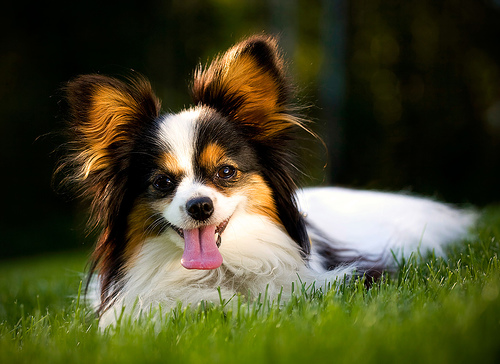
On today’s image of Tazzy the Papillon I used this method of lighting. To set up the shot, I placed Tazzy with the early evening sunlight over her right shoulder. The sun at this angle provided a nice hair ear light. The main light for the shot was then provided by a reflector being held to the right of and slightly below the camera. This placement gave a natural light focused on the dog’s face and brightened up the eyes with large catchlights.
One difficulty in using reflectors is positioning them. My daughter (and sometimes assistant) Elisabeth helped me by holding the reflector. The constant movement of Tazzy provided a bit of a challenge in keeping the light on her face, but Elisabeth kept up nicely.
At a relatively inexpensive price, adding a reflector to your kit is a great way to increase your photographic lighting options.
Canon 5D, Canon 70-200 f/4L lens – 1/320 second, f/4, ISO 100
LeggNet’s Digital Capture
© Rich Legg, Inc. All rights reserved.
July 30th, 2007 12:00 am | Comments Off on Reflector Lighting for Portraits
July 29, 2007
]]> 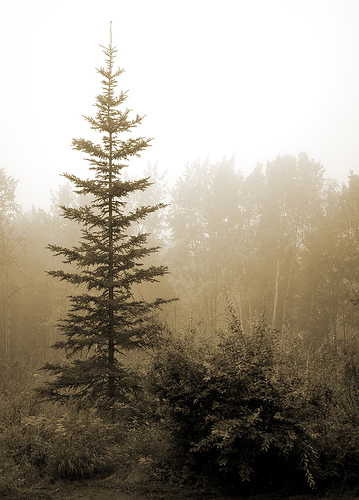
Canon 5D, Canon 24-105 f/4L lens – 1/80 second, f/9, ISO 160
LeggNet’s Digital Capture
© Rich Legg, Inc. All rights reserved.
July 29th, 2007 12:00 am | Comments Off on Morning Spruce
July 28, 2007
]]> 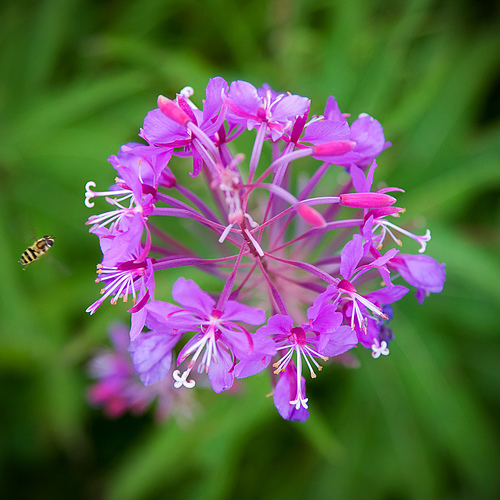
Canon 5D, Canon 24-105 f/4L lens – 1/160 second, f/4.5, ISO 160
LeggNet’s Digital Capture
© Rich Legg, Inc. All rights reserved.
July 28th, 2007 12:00 am | Comments Off on Fireweed Serendipity
July 27, 2007
]]> 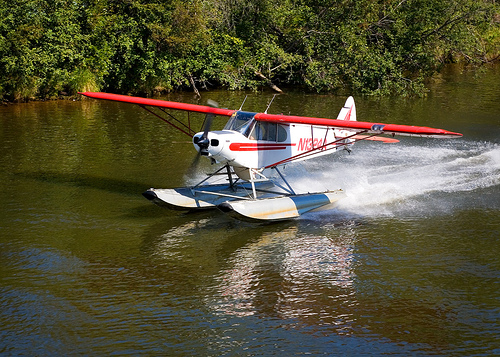
Today’s featured image is a Piper PA-18 “Super Cub” floatplane taking off on Fairbanks’ Chena River. I grew up flying around Alaska with my father in his floatplane and it was really nice to re-live those memories.
Canon 5D, Canon 24-105 f/4L lens – 1/800 second, f/5.6, ISO 160
LeggNet’s Digital Capture
© Rich Legg, Inc. All rights reserved.
July 27th, 2007 12:00 am | Comments Off on Homeward Bound
July 26, 2007
]]> 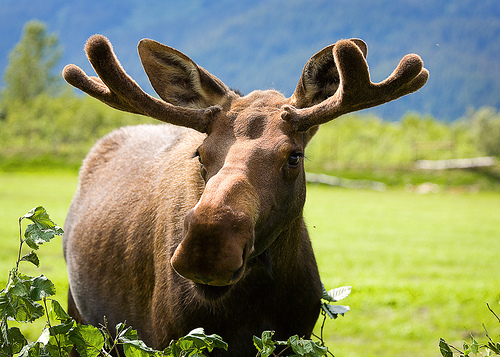
Canon 5D, Canon 70-200 f/4L lens with 1.4x extender – 1/320 second, f/5.6, ISO 100
LeggNet’s Digital Capture
© Rich Legg, Inc. All rights reserved.
July 26th, 2007 12:00 am | Comments Off on Young Bull
July 25, 2007
]]> 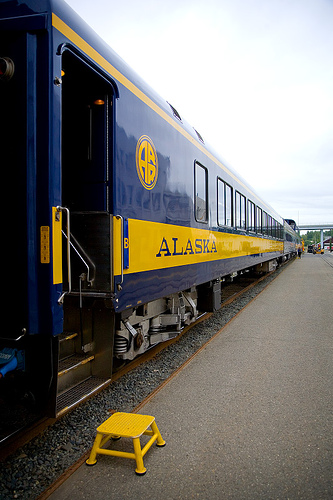
July 25th, 2007 12:00 am | Comments Off on
The Alaska Railroad
July 24, 2007
]]> 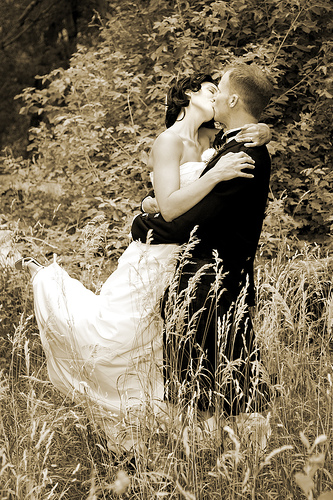
July 24th, 2007 12:00 am | Comments Off on
The Kiss
July 24, 2007
]]> 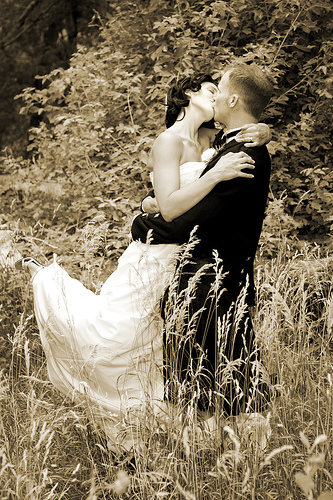
LeggNet’s Digital Capture
© Rich Legg, Inc. All rights reserved.
July 24th, 2007 12:00 am | Comments Off on The Kiss
July 24, 2007
]]> 
LeggNet’s Digital Capture
© Rich Legg, Inc. All rights reserved.
July 24th, 2007 12:00 am | Comments Off on The Alaska Railroad
July 22, 2007
]]> 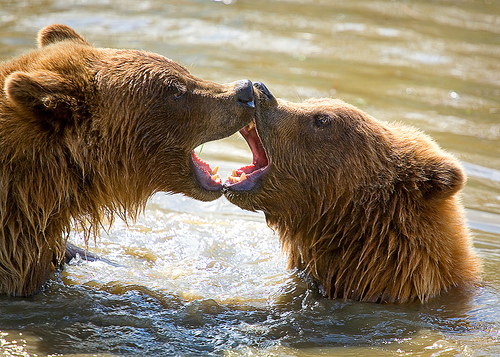
Today’s photo of a Grizzly Bear and a Brown Bear sparring in the water was shot on Friday during my visit to the Alaska Wildlife Conservation Center. The center is located about an hour south of Anchorage in the extremely small town of Girdwood. Most of the animals there are rescues being prepared for re-introduction into the wild. The opportunity to photograph these bears at such a close range was clearly the highpoint of my visit.
Today, I am off to Denali National Park and Fairbanks on the Alaska Railroad.
Canon 5D, Canon 70-200 f/4L with 1.4x extender – 1/400 second, f/5.6, ISO 125
LeggNet’s Digital Capture
© Rich Legg, Inc. All rights reserved.
July 22nd, 2007 12:00 am | Comments Off on Nose to Nose
July 21, 2007
]]> 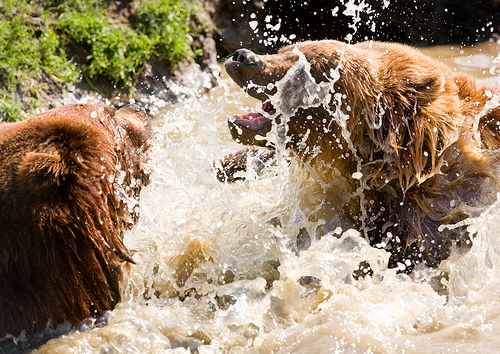
LeggNet’s Digital Capture
© Rich Legg, Inc. All rights reserved.
July 21st, 2007 12:00 am | Comments Off on Alaskan Grizzly Bears
July 20, 2007
]]> 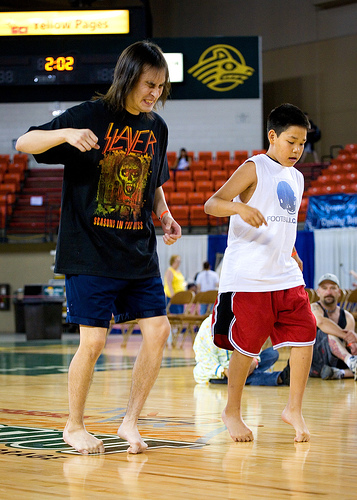
Lady (sternly): “Did you register at the press table?”
Me: “No”
Lady: “All press has to register”
Me: “I’m not press” (I didn’t think LeggNet’s Digital Capture would warrant credentials)
Lady: “You’re not press??”
Me: “Nope, I’m just a guy here with my family”
Lady: “You’re not going to sell these pictures are you?”
Me: “No. I’m just on vacation with my family”
Lady: “Uh… okay”
Me (a bit miffed): “Thanks. I just missed the event I wanted to see”
Lady (sarcastically): “There’ll be more (walks while muttering something about my big camera)
Stranger next to me (with her point & shoot camera): “I can’t believe she stood in front of me and blocked my view. I really wanted a picture of that event”
Me: “I’m sorry ma’am”
I guess this is one of the hidden benefits of shooting with nice gear, especially a long white lens on a large camera body. I don’t think I’d have had the same conversation if I had been using my G7.
July 20th, 2007 12:00 am | Comments Off on
A Benefit of High End Camera Gear
July 20, 2007
]]> 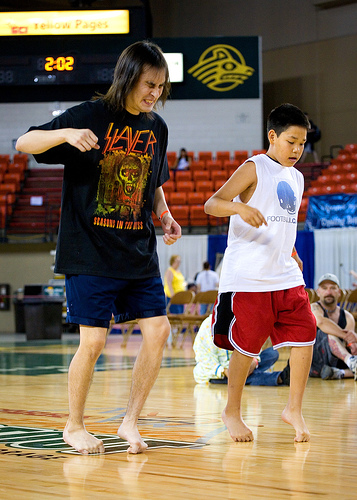
Lady (sternly): “Did you register at the press table?”
Me: “No”
Lady: “All press has to register”
Me: “I’m not press” (I didn’t think LeggNet’s Digital Capture would warrant credentials)
Lady: “You’re not press??”
Me: “Nope, I’m just a guy here with my family”
Lady: “You’re not going to sell these pictures are you?”
Me: “No. I’m just on vacation with my family”
Lady: “Uh… okay”
Me (a bit miffed): “Thanks. I just missed the event I wanted to see”
Lady (sarcastically): “There’ll be more (walks while muttering something about my big camera)
Stranger next to me (with her point & shoot camera): “I can’t believe she stood in front of me and blocked my view. I really wanted a picture of that event”
Me: “I’m sorry ma’am”
I guess this is one of the hidden benefits of shooting with nice gear, especially a long white lens on a large camera body. I don’t think I’d have had the same conversation if I had been using my G7.
LeggNet’s Digital Capture
© Rich Legg, Inc. All rights reserved.
July 20th, 2007 12:00 am | Comments Off on A Benefit of High End Camera Gear
July 18, 2007
]]> 
Labels: stock
July 18th, 2007 12:00 am | Comments Off on
Scene of the Crime
July 18, 2007
]]> 
LeggNet’s Digital Capture
© Rich Legg, Inc. All rights reserved.
July 18th, 2007 12:00 am | Comments Off on Scene of the Crime
July 17, 2007
]]> 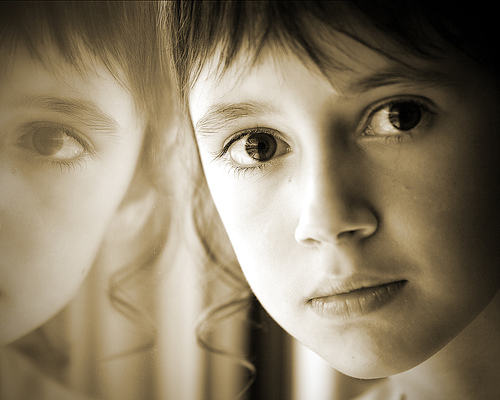
I noticed this great afternoon sunlight being deflected through the window of a Salt Lake City hotel on Saturday. The light, combined with the reflection, made a very nice portrait setting. My always willing model Sarah stepped in to pose for the quick capture.
Canon 5D, Canon 70-200 f/4L lens – 1/160 second, f/4, ISO 160
On a side note, I am heading out to Alaska today for a week or so to attend my nephew’s wedding. I haven’t been back to Alaska in over 10 years and I am excited to see how things have changed. It is rumored that I will have Internet access where I am staying so I can occasionally post to the site. But in case I don’t – enjoy this pleasant photo of Sarah until my return.
Labels: bw, portrait, sepia
July 17th, 2007 12:00 am | Comments Off on
Seeing Things in a Different Light
July 16, 2007
]]> 
I received an email last month from an iStock user who recognized my photograph of a gas nozzle when he viewed the news on the Canadian website CBC.ca. He was kind enough to email me and I went to the site and made this screen capture.
Of the over 2,000 photos I have sold so far, this in only the second time I have heard of one in use. If you’re selling images on microstock, have you ever seen yours in use?
Labels: istockphoto, photography, stock
July 16th, 2007 12:00 am | Comments Off on
iStock in Use
July 14, 2007
]]> 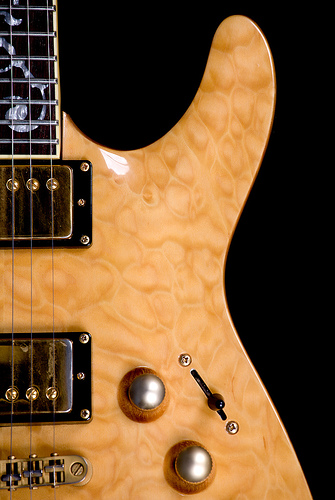
Labels: studio
July 14th, 2007 12:00 am | Comments Off on
Guitar on Black
July 13, 2007
]]> 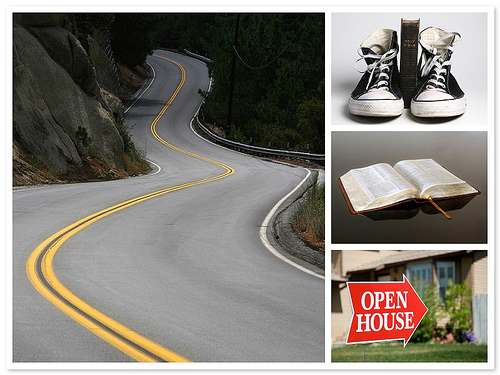
What makes these sites controversial is they literally pay their contributing photographers pennies for each download. On iStockphoto.com, the largest microstock site with nearly 2,000,000 files available, downloads sell for as little as $1 each with the contributor receiving as little as 20% of this income.
Why would a photographer want to sell their photos for such a low amount? The simple answer is Volume. While a local client might pay a photographer $200 once for an image, a good photo on iStockphoto might sell several hundred times generating much more income over the long run.
With this in mind, I recently decided to concentrate more of my photographic time on shooting for iStockphoto to see what I could earn. Over the past three months I have increased my iStockphoto portfolio from under 100 images to nearly 400. The resulting increase in sales has been dramatic. My June earnings of nearly $500 are over a tenfold increase compared to what I earned in March and July is showing even more growth. While I surely could not support my family on $500 a month, what if I were to increase this amount by another factor of ten? $5,000 a month is a viable salary and iStockphoto is full of stories of photographers earning a living shooting for them.
Todays image is a mosaic of my best selling shots. What strikes me is the diversity in the images. The open bible photo is my top selling image with nearly 200 downloads, yet the mountain road capture has earned more revenue due to its larger average download size.
I look forward to continuing to add images to my portfolio and monitor the growth. Is this a sustainable business long-term? We’ll have to wait and see.
My iStockphoto Portfolio
iStockphoto Registration
Labels: stock
July 13th, 2007 12:00 am | Comments Off on
Selling Photos on iStockphoto.com
July 12, 2007
]]> 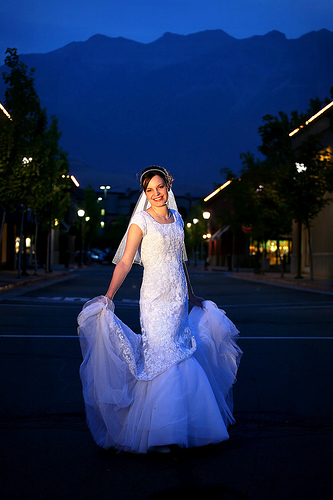
The one word that I kept hearing repeated from the students (myself included) was “AMAZING”. Kenneth freely shared with his students the techniques he developed over 30+ years as a fashion and wedding photographer in both Europe and the United States. During the class Kenneth co-taught with his wife Marylyn, and together they made a fantastic team. In an industry where so many people are reluctant to show their secrets, it was refreshing to see a photographer willing to share his photographic “recipes” to improve other’s work. Even though the class was primarily aimed at wedding photography, the techniques learned can be applied to any portrait work.
I would definitely recommend the class for any working pro or advanced amateur looking to step up their photography. For more information, check out the Linge’s seminars on the web:
www.kennethlinge.com/seminars
Canon 5D, Canon 70-200 f/4L lens – 1/60 second, f/4, ISO 800
Labels: photography, tutorial, wedding
July 12th, 2007 12:00 am | Comments Off on
The Wedding School with Kenneth Linge
July 11, 2007
]]> 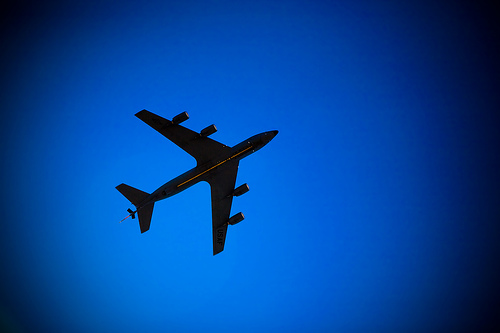
Canon 5D, Canon 24-105 f/4L lens – 1/5000 second, f/4, ISO 100
Labels: holiday
July 11th, 2007 12:00 am | Comments Off on
Fly Over
July 10, 2007
]]> 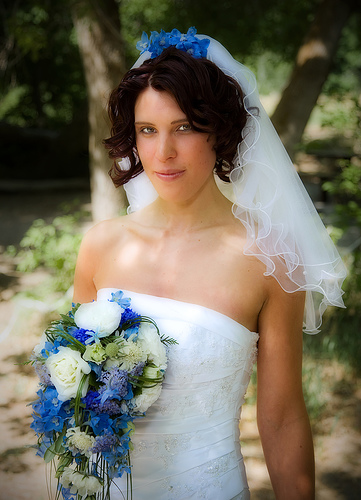
The nuptials I shot were in a beautiful rustic setting. The bride and groom are both avid rock climbers, and they had their ceremony at the base of a climbing route in Big Cottonwood Canyon just outside of Salt Lake City. After the ceremony and reception, the couple christened their new life together with a 5.10 climb. It was extremely unique and very cool.
Congrats to Brian & Militia.
Canon 5D, Canon 24-105 f/4L lens – 1/125 second, f/4, ISO 100
Labels: marriage, wedding
July 10th, 2007 12:00 am | Comments Off on
The Rock Climbing Bride
July 9, 2007
]]> 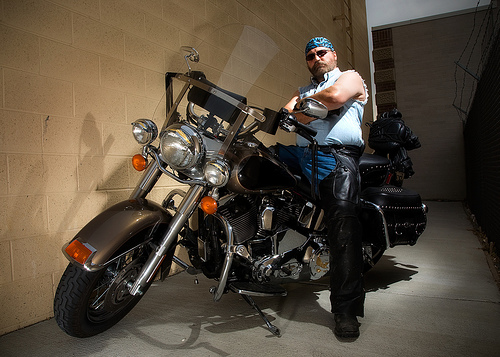
See my earlier post for details on the lighting setup. Other images from the shoot can be seen HERE.
Canon 5D, Canon 24-105 f/4L IS lens – 1/60 second, f/11, ISO 100
Labels: photography
July 9th, 2007 12:00 am | Comments Off on
Bad Attitude
July 8, 2007
]]> 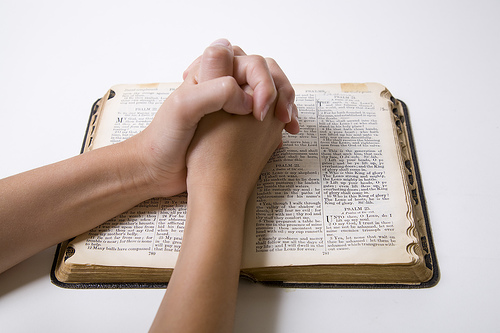
July 8th, 2007 12:00 am | Comments Off on
. . . on the 7th day . . .
July 7, 2007
July 7th, 2007 12:00 am | Comments Off on
Bueller? Bueller?
July 6, 2007
]]> 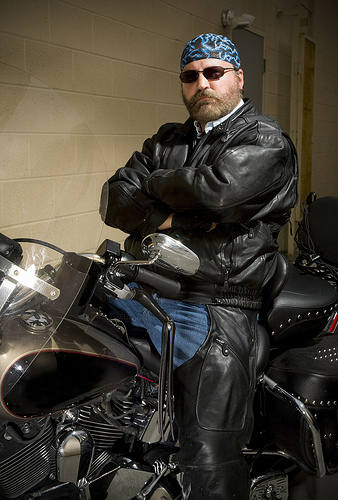
The lighting setup consisted of two Canon Speedlites – a 430EX and a 580EX. For this shot, the 430EX was used as the main light. It was placed on a lightstand above and to the left (camera right) of the model. The fill light was provided by the 580EX with a diffuser. I held this light in my left hand a couple of feet away and below the camera. An f-stop of f/11 was used to darken the background. This was shot just after 8:00 pm and the ambient light was still fairly bright (f/4 or so) so setting the strobes to f/11 underexposed the background by around 3 stops.
The final result is very near to what I envisioned for the shot. The harsh lighting adds nicely to the dramatic look of the stern faced biker. The two Speedlite setup worked very well and was easy to set up.
Canon 5D, Canon 24-105 f/4L lens – 1/60 second, f/11, ISO 100
Labels: photography, stock, tutorial
July 6th, 2007 12:00 am | Comments Off on
A Man, a Motorcycle & Two Speedlights
July 5, 2007
]]> 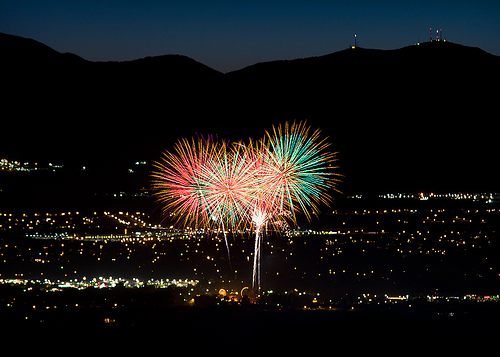
I made this capture last night from a friend’s hillside home. Looking down on the valley gave a different perspective on the firework shows than I am used to.
The shot is not as sharp as I would prefer (due to camera shake) and I had to apply a bit of aggressive sharpening to the image. The cause of the camera movement was the deck full of people I was shooting from. Anytime someone moved, it caused a slight shake in the deck – just enough to mess with the shot.
Canon 5D, Canon 70-200 f/4L with 1.4x extender – 10 seconds, f/9, ISO 100
July 5th, 2007 12:00 am | Comments Off on
The End of the Fourth
July 4, 2007
]]> 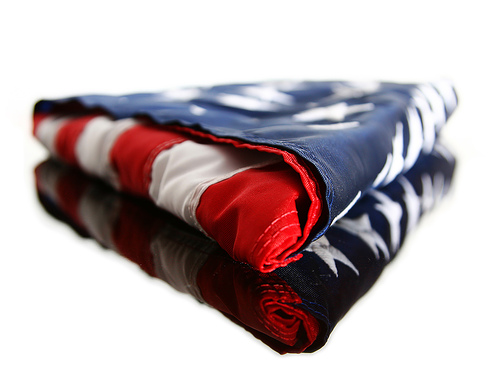
President John Adams nearly got it right. He predicted that we would be celebrating the 2nd of July as our national birthday.
“The second day of July, 1776, will be the most memorable epoch in the history of America. I am apt to believe that it will be celebrated by succeeding generations as the great anniversary festival. It ought to be commemorated as the day of deliverance, by solemn acts of devotion to God Almighty. It ought to be solemnized with pomp and parade, with shows, games, sports, guns, bells, bonfires, and illuminations, from one end of this continent to the other, from this time forward forever more.”
(Quoted from a letter John Adams wrote to his wife Abigail on July 3, 1776)
Labels: holiday
July 4th, 2007 12:00 am | Comments Off on
Born on the 4th of July
July 3, 2007
]]> 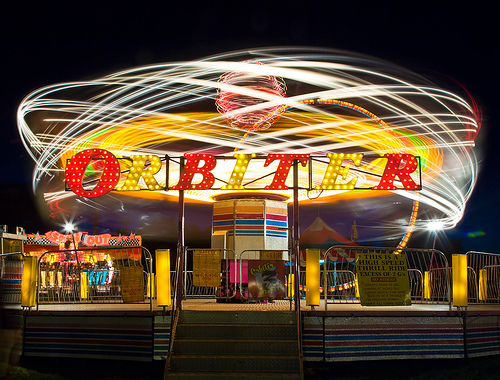
The method I use for this type of shot is simple and straightforward. I put my camera on APERTURE PRIORITY mode (AV on a Canon) and then stop the lens down to its smallest aperture. With the camera on a tripod I compose the shot and trigger it with a remote release, letting the camera’s auto function handle both focus and shutter speed. A low ISO will ensure a longer shutter speed.
This technique permits me to be fairly mobile, not staying in one place too long. I don’t like to draw too much attention to myself when photographing in a crowded area and keeping on the move helps.
Canon 5D, Canon 24-105 f/4L lens – 4 seconds, f/22, ISO 100
Labels: night, time exposure
July 3rd, 2007 12:00 am | Comments Off on
Low Earth Orbit
July 2, 2007
]]> 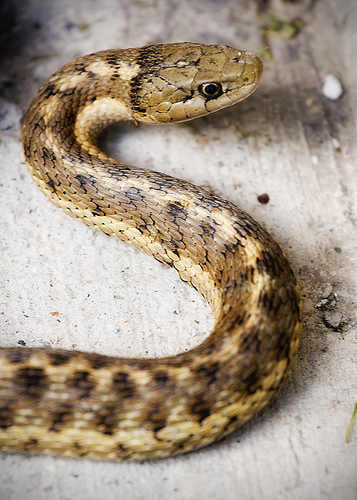
Canon 5D, Canon 70-200 f/4L lens – 1/80 second, f/5.6, ISO 160
Labels: animal, photoshop
July 2nd, 2007 12:00 am | Comments Off on
“S” is for Snake
July 1, 2007
]]> 
Canon 5D, Canon 70-200 f/4L lens – 1/80 second, f/5.6, ISO 160
LeggNet’s Digital Capture
© Rich Legg, Inc. All rights reserved.
July 1st, 2007 12:00 am | Comments Off on “S” is for Snake
June 30, 2007
]]>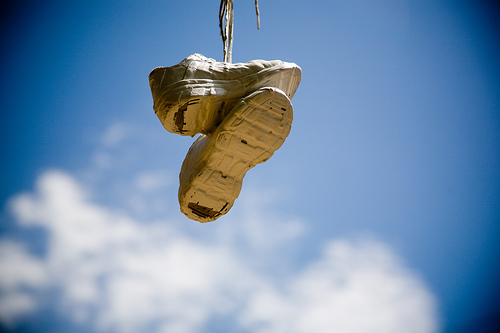
LeggNet’s Digital Capture
© Rich Legg, Inc. All rights reserved.
June 30th, 2007 12:00 am | Comments Off on Rapture
June 29, 2007
]]> 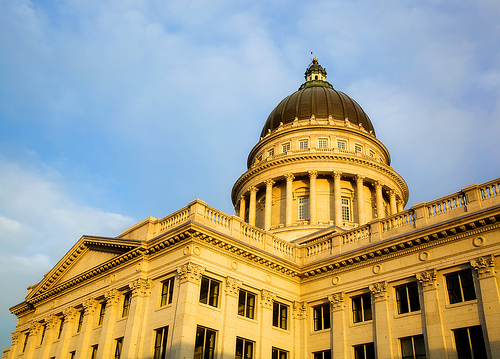
Canon 5D, Canon 24-105 f/4L lens – .4 second, f/22, ISO 100
LeggNet’s Digital Capture
© Rich Legg, Inc. All rights reserved.
June 29th, 2007 12:00 am | Comments Off on Capitol at Sunset
June 28, 2007
]]> 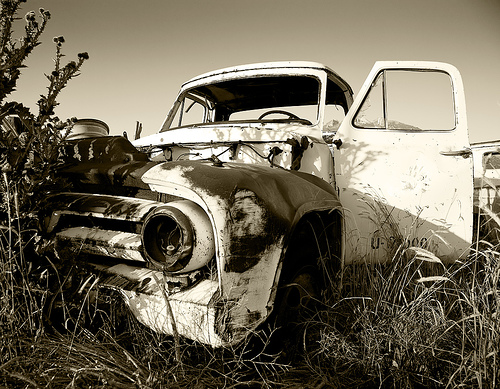
Thanks to fellow photographer Dale for giving me a heads up on the location of this old farm.
Canon 5D, Canon 24-105 f/4L lens – 1/100 second, f/8, ISO 100
LeggNet’s Digital Capture
© Rich Legg, Inc. All rights reserved.
June 28th, 2007 12:00 am | Comments Off on Out to Pasture
June 27, 2007
]]> 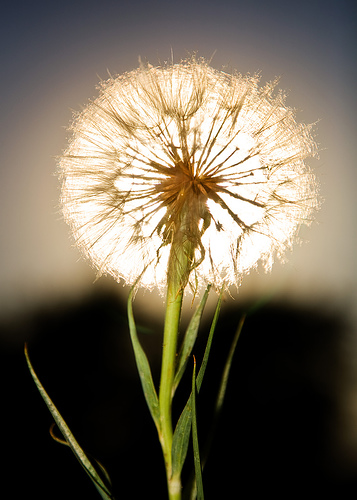
My typical exposure settings for using a fill flash in daylight is to adjust my strobe (a Canon 430EX) to an exposure setting of negative 2/3 f-stop. This allows shadow areas to be illuminated without making the shot look like a flash was used.
Canon 5D, Canon 24-105 f/4L lens – 1/8000 second, f/4, ISO 100
LeggNet’s Digital Capture
© Rich Legg, Inc. All rights reserved.
June 27th, 2007 12:00 am | Comments Off on Filling with Flash
June 26, 2007
]]> 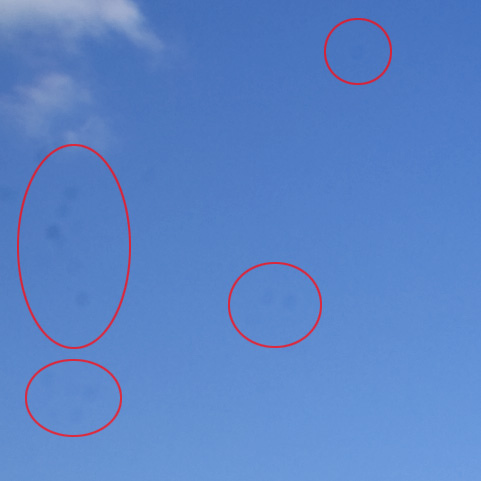
After I made the move from film to digital, the discovery of dust on my camera’s sensor was a major shock. But now after a couple years of shooting digital and dozens of sensor cleans, I now look at it as just a minor annoyance.
There are two types of digital SLR shooters – those that have dust on their sensor and those that will have dust on their sensor. I believe that every photographer should learn how to handle it. Here are the steps I take with my cameras.
To see if you have dust, stop your camera down to its smallest aperture (usually f/22-32) and take a shot against a blank scene (blue sky works well). The dust will show up as dark blotches. The photo above shows numerous dust spots that I recently had on my Canon 5D. Keep in mind that these spots will only show up on photos taken with smaller apertures and they can easily be removed in post-processing, so you don’t have to obsess over cleaning them daily.
I use a few different items to clean my camera sensors. My kit consists of a manual bulb type blower along with sensor cleaning swabs & fluid.
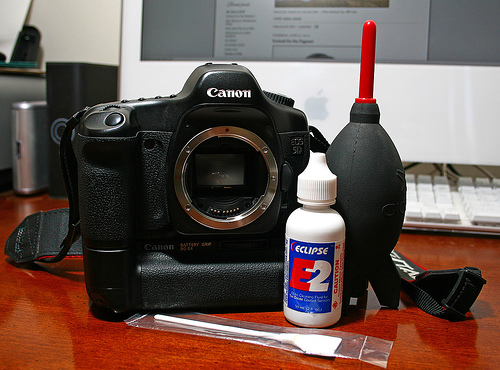
The first step I take in cleaning is to set my camera into “SENSOR CLEANING” mode. This is a menu function that opens the shutter and locks the mirror up allowing access to the sensor. Since moving these out of the way uses power, be sure to have a sufficiently charged battery before starting.
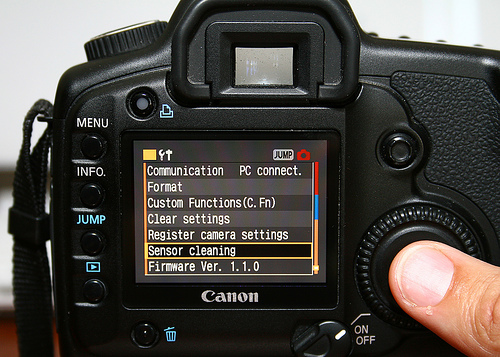
Once I have the camera in cleaning mode, I remove the lens and blow off the sensor with the bulb blower. I do this with the lens opening aiming down to allow the dust to exit. Take care to not touch anything inside the camera with the tip of the blower. If I only have a few dust spots, this will frequently be the only step necessary since the blowing air will dislodge the dust.
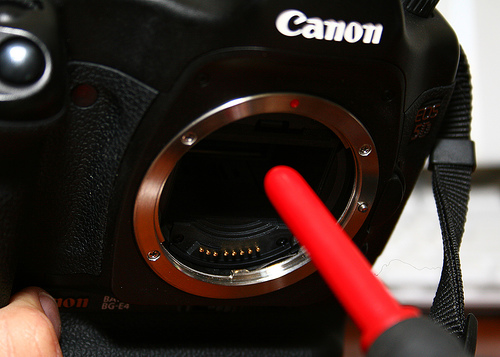
To remove stubborn dust spots, I use the sensor cleaning solution with a swab. This is the most effective method for me. I put a few drops of solution on the swab and make two passes across the sensor – once in each direction. I use very little pressure on the swab. It is very imperative to only use a swab once on each side to avoid re-contaminating the sensor with previously removed dust.
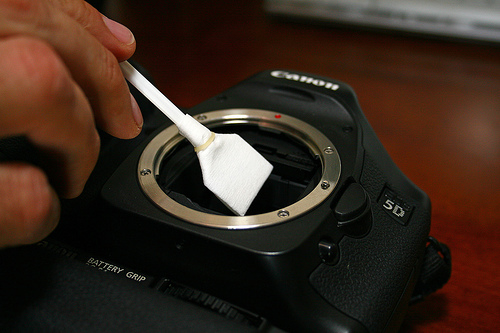
Note that most camera manufacturers state in their user manual that you are to never touch the sensor with anything and using this method can risk voiding your warranty. However, if you took your camera in to be professionally cleaned this is probably the method they will use.
Sensor dust is part of the price we pay for shooting with the great digital SLRs that are available today. The internet is full of stories of photographers obsessing about every little speck of dust. Don’t be like these shooters and let it consume you. Learn how to clean your own sensor when needed and spend your time worrying about the next great photo instead of a microscopic piece of dirt.
(Was this helpful? If so, please DIGG it.)
Labels: tutorial
June 26th, 2007 12:00 am | Comments Off on
Removing Dust on the Sensor of a Digital SLR
June 26, 2007
]]> 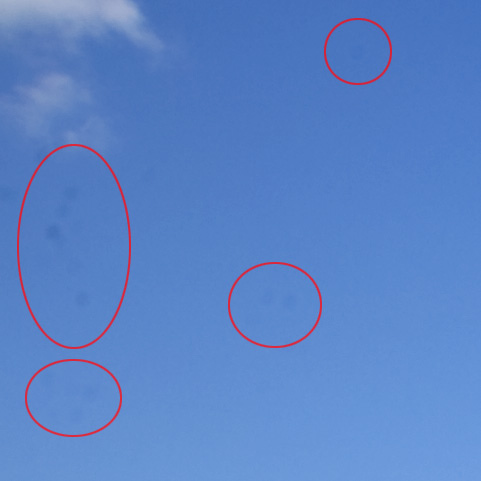
After I made the move from film to digital, the discovery of dust on my camera’s sensor was a major shock. But now after a couple years of shooting digital and dozens of sensor cleans, I now look at it as just a minor annoyance.
There are two types of digital SLR shooters – those that have dust on their sensor and those that will have dust on their sensor. I believe that every photographer should learn how to handle it. Here are the steps I take with my cameras.
To see if you have dust, stop your camera down to its smallest aperture (usually f/22-32) and take a shot against a blank scene (blue sky works well). The dust will show up as dark blotches. The photo above shows numerous dust spots that I recently had on my Canon 5D. Keep in mind that these spots will only show up on photos taken with smaller apertures and they can easily be removed in post-processing, so you don’t have to obsess over cleaning them daily.
I use a few different items to clean my camera sensors. My kit consists of a manual bulb type blower along with sensor cleaning swabs & fluid.
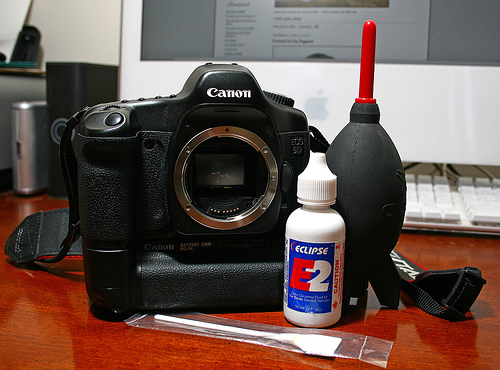
The first step I take in cleaning is to set my camera into “SENSOR CLEANING” mode. This is a menu function that opens the shutter and locks the mirror up allowing access to the sensor. Since moving these out of the way uses power, be sure to have a sufficiently charged battery before starting.
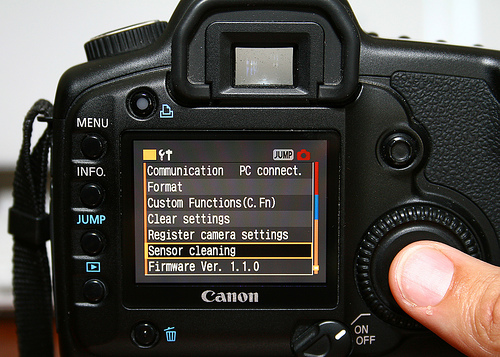
Once I have the camera in cleaning mode, I remove the lens and blow off the sensor with the bulb blower. I do this with the lens opening aiming down to allow the dust to exit. Take care to not touch anything inside the camera with the tip of the blower. If I only have a few dust spots, this will frequently be the only step necessary since the blowing air will dislodge the dust.
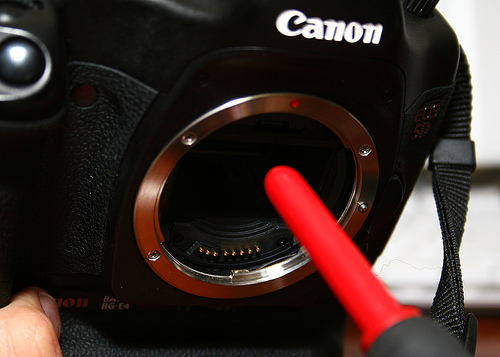
To remove stubborn dust spots, I use the sensor cleaning solution with a swab. This is the most effective method for me. I put a few drops of solution on the swab and make two passes across the sensor – once in each direction. I use very little pressure on the swab. It is very imperative to only use a swab once on each side to avoid re-contaminating the sensor with previously removed dust.
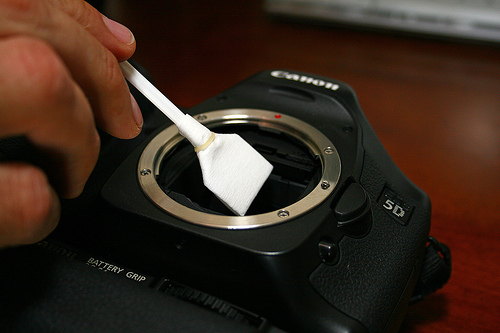
Note that most camera manufacturers state in their user manual that you are to never touch the sensor with anything and using this method can risk voiding your warranty. However, if you took your camera in to be professionally cleaned this is probably the method they will use.
Sensor dust is part of the price we pay for shooting with the great digital SLRs that are available today. The internet is full of stories of photographers obsessing about every little speck of dust. Don’t be like these shooters and let it consume you. Learn how to clean your own sensor when needed and spend your time worrying about the next great photo instead of a microscopic piece of dirt.
(Was this helpful? If so, please DIGG it.)
LeggNet’s Digital Capture
© Rich Legg, Inc. All rights reserved.
June 26th, 2007 12:00 am | Comments Off on Removing Dust on the Sensor of a Digital SLR
June 25, 2007
]]> 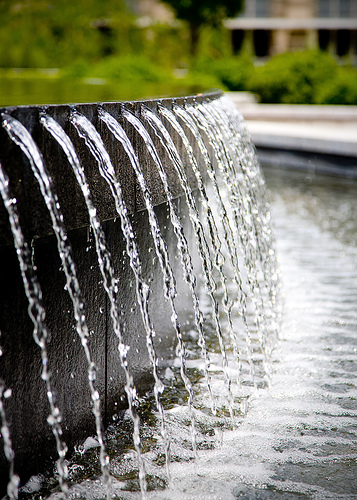
Canon 5D, Canon 24-105 f/4L lens – 1/640 second, f/4, ISO 100
LeggNet’s Digital Capture
© Rich Legg, Inc. All rights reserved.
June 25th, 2007 12:00 am | Comments Off on Capitol Fountain
June 24, 2007
]]> 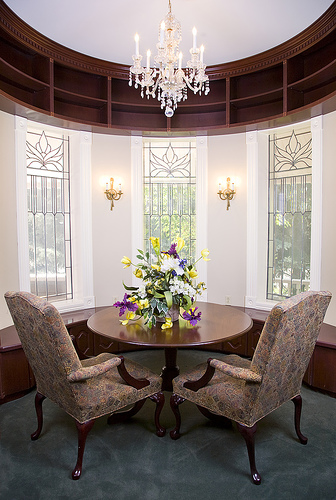
My goal in lighting this room was to show outside detail in the windows while evenly lighting the interior. To accomplish this I placed a Canon 430EX speedlite behind the floral arrangement aimed toward the back wall. The speedlite was diffused with a Lightsphere and set to 1/2 power. I then used two monolights diffused with white umbrellas in the corners to the left and right of the camera.
While the lighting setup was fairly simple on this shot, the tricky part was eliminating reflections in the three windows. Since the windows are each at different angles, the placement of the lights left little room for error. Nearly every reflection was avoided, save for a slight one on the right window.
Another challenge with this room was the bookcases above the windows. I wanted to provide enough light to show depth in the openings but still leaving them somewhat dark. The placement of the monolights in the corners achieved this. I had to raise the lights a bit higher than I initially wanted (creating more noticeable shadows), but the trade off was worth it.
Of all the rooms I shot that day, this one was my favorite. I love the curved wall and the custom woodwork.
Canon 5D, Canon 24-105 f/4L lens – 1/15 second, f/6.3, ISO 100
Labels: buildings, photography, tutorial
June 24th, 2007 12:00 am | Comments Off on
Lighting a Historic Room – Part II
June 24, 2007
]]> 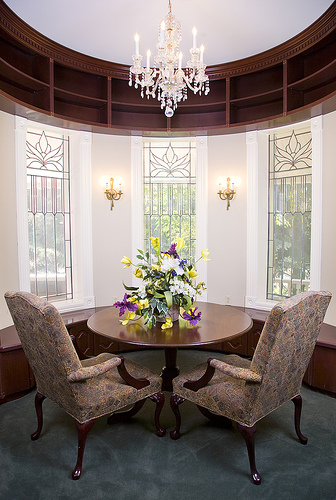
My goal in lighting this room was to show outside detail in the windows while evenly lighting the interior. To accomplish this I placed a Canon 430EX speedlite behind the floral arrangement aimed toward the back wall. The speedlite was diffused with a Lightsphere and set to 1/2 power. I then used two monolights diffused with white umbrellas in the corners to the left and right of the camera.
While the lighting setup was fairly simple on this shot, the tricky part was eliminating reflections in the three windows. Since the windows are each at different angles, the placement of the lights left little room for error. Nearly every reflection was avoided, save for a slight one on the right window.
Another challenge with this room was the bookcases above the windows. I wanted to provide enough light to show depth in the openings but still leaving them somewhat dark. The placement of the monolights in the corners achieved this. I had to raise the lights a bit higher than I initially wanted (creating more noticeable shadows), but the trade off was worth it.
Of all the rooms I shot that day, this one was my favorite. I love the curved wall and the custom woodwork.
Canon 5D, Canon 24-105 f/4L lens – 1/15 second, f/6.3, ISO 100
LeggNet’s Digital Capture
© Rich Legg, Inc. All rights reserved.
June 24th, 2007 12:00 am | Comments Off on Lighting a Historic Room – Part II
June 23, 2007
]]> 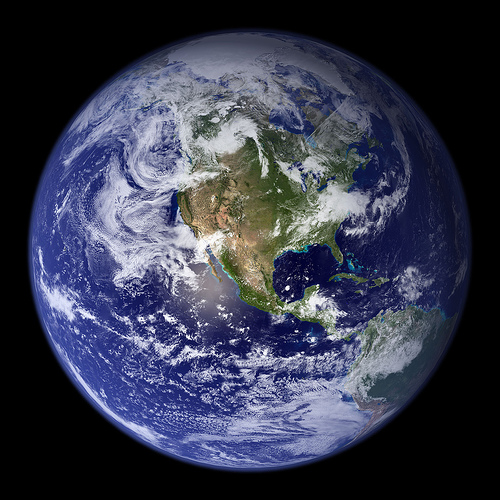
____________
NASA’s latest hi-res image of Earth. Download more of this at: visibleearth.nasa.gov/view_rec.php?id=2429
This spectacular “blue marble” image is the most detailed true-color image of the entire Earth to date. Using a collection of satellite-based observations, scientists and visualizers stitched together months of observations of the land surface, oceans, sea ice, and clouds into a seamless, true-color mosaic of every square kilometer (.386 square mile) of our planet. These images are freely available to educators, scientists, museums, and the public. This record includes preview images and links to full resolution versions up to 21,600 pixels across.
Much of the information contained in this image came from a single remote-sensing device-NASA’s Moderate Resolution Imaging Spectroradiometer, or MODIS. Flying over 700 km above the Earth onboard the Terra satellite, MODIS provides an integrated tool for observing a variety of terrestrial, oceanic, and atmospheric features of the Earth. The land and coastal ocean portions of these images are based on surface observations collected from June through September 2001 and combined, or composited, every eight days to compensate for clouds that might block the sensor’s view of the surface on any single day. Two different types of ocean data were used in these images: shallow water true color data, and global ocean color (or chlorophyll) data. Topographic shading is based on the GTOPO 30 elevation dataset compiled by the U.S. Geological Survey’s EROS Data Center. MODIS observations of polar sea ice were combined with observations of Antarctica made by the National Oceanic and Atmospheric Administration’s AVHRR sensor—the Advanced Very High Resolution Radiometer. The cloud image is a composite of two days of imagery collected in visible light wavelengths and a third day of thermal infra-red imagery over the poles. Global city lights, derived from 9 months of observations from the Defense Meteorological Satellite Program, are superimposed on a darkened land surface map.
Credit
NASA Goddard Space Flight Center Image by Reto Stöckli (land surface, shallow water, clouds). Enhancements by Robert Simmon (ocean color, compositing, 3D globes, animation). Data and technical support: MODIS Land Group; MODIS Science Data Support Team; MODIS Atmosphere Group; MODIS Ocean Group Additional data: USGS EROS Data Center (topography); USGS Terrestrial Remote Sensing Flagstaff Field Center (Antarctica); Defense Meteorological Satellite Program (city lights).
June 23rd, 2007 12:00 am | Comments Off on
The Blue Marble courtesy of NASA
June 23, 2007
]]> 
____________
NASA’s latest hi-res image of Earth. Download more of this at: visibleearth.nasa.gov/view_rec.php?id=2429
This spectacular “blue marble” image is the most detailed true-color image of the entire Earth to date. Using a collection of satellite-based observations, scientists and visualizers stitched together months of observations of the land surface, oceans, sea ice, and clouds into a seamless, true-color mosaic of every square kilometer (.386 square mile) of our planet. These images are freely available to educators, scientists, museums, and the public. This record includes preview images and links to full resolution versions up to 21,600 pixels across.
Much of the information contained in this image came from a single remote-sensing device-NASA’s Moderate Resolution Imaging Spectroradiometer, or MODIS. Flying over 700 km above the Earth onboard the Terra satellite, MODIS provides an integrated tool for observing a variety of terrestrial, oceanic, and atmospheric features of the Earth. The land and coastal ocean portions of these images are based on surface observations collected from June through September 2001 and combined, or composited, every eight days to compensate for clouds that might block the sensor’s view of the surface on any single day. Two different types of ocean data were used in these images: shallow water true color data, and global ocean color (or chlorophyll) data. Topographic shading is based on the GTOPO 30 elevation dataset compiled by the U.S. Geological Survey’s EROS Data Center. MODIS observations of polar sea ice were combined with observations of Antarctica made by the National Oceanic and Atmospheric Administration’s AVHRR sensor—the Advanced Very High Resolution Radiometer. The cloud image is a composite of two days of imagery collected in visible light wavelengths and a third day of thermal infra-red imagery over the poles. Global city lights, derived from 9 months of observations from the Defense Meteorological Satellite Program, are superimposed on a darkened land surface map.
Credit
NASA Goddard Space Flight Center Image by Reto Stöckli (land surface, shallow water, clouds). Enhancements by Robert Simmon (ocean color, compositing, 3D globes, animation). Data and technical support: MODIS Land Group; MODIS Science Data Support Team; MODIS Atmosphere Group; MODIS Ocean Group Additional data: USGS EROS Data Center (topography); USGS Terrestrial Remote Sensing Flagstaff Field Center (Antarctica); Defense Meteorological Satellite Program (city lights).
LeggNet’s Digital Capture
© Rich Legg, Inc. All rights reserved.
June 23rd, 2007 12:00 am | Comments Off on The Blue Marble courtesy of NASA
June 22, 2007
]]> 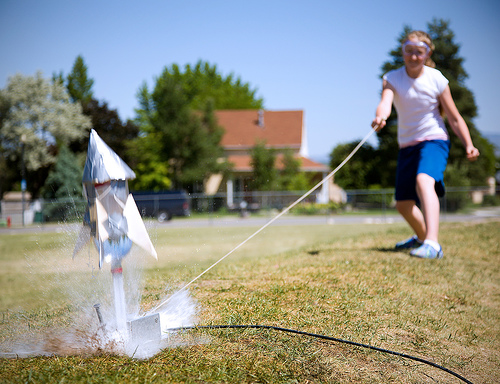
LeggNet’s Digital Capture
© Rich Legg, Inc. All rights reserved.
June 22nd, 2007 12:00 am | Comments Off on We Have Liftoff
June 21, 2007
]]> 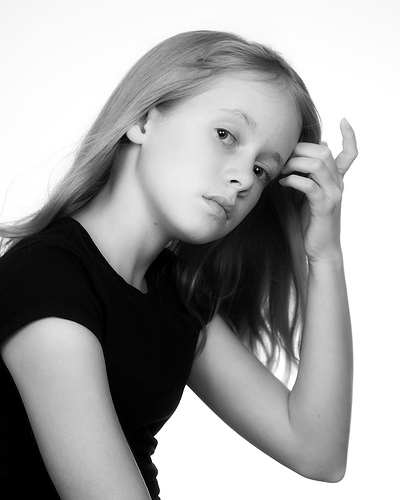
Today’s photo is Elisabeth’s favorite from the shoot. This hair adjustment pose was not planned, I just happened to catch her as she rearranged her bangs. The left hand in the hair along with the serious expression combine for a rather dramatic shot.
The lighting setup consisted of a softbox above the camera with an umbrella providing fill to one side. A third light was used to wash out the white background.
Canon 5D, Canon 24-105 f/4L lens – 1/60 second, f/9, ISO 100
Labels: bw, portrait, studio
June 21st, 2007 12:00 am | Comments Off on
Portrait for the Pageant
June 21, 2007
]]> 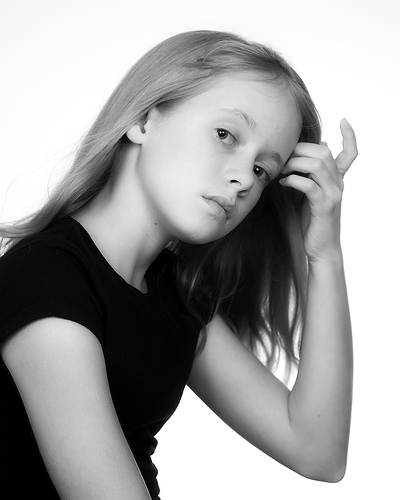
Today’s photo is Elisabeth’s favorite from the shoot. This hair adjustment pose was not planned, I just happened to catch her as she rearranged her bangs. The left hand in the hair along with the serious expression combine for a rather dramatic shot.
The lighting setup consisted of a softbox above the camera with an umbrella providing fill to one side. A third light was used to wash out the white background.
Canon 5D, Canon 24-105 f/4L lens – 1/60 second, f/9, ISO 100
LeggNet’s Digital Capture
© Rich Legg, Inc. All rights reserved.
June 21st, 2007 12:00 am | Comments Off on Portrait for the Pageant
June 20, 2007
]]> 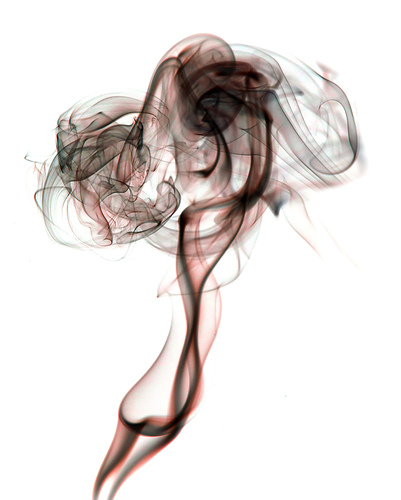
LeggNet’s Digital Capture
© Rich Legg, Inc. All rights reserved.
June 20th, 2007 12:00 am | Comments Off on She Moves in Mysterious Ways
June 19, 2007
June 19th, 2007 12:00 am | Comments Off on
Salt Lake City on a Mac
June 18, 2007
]]> 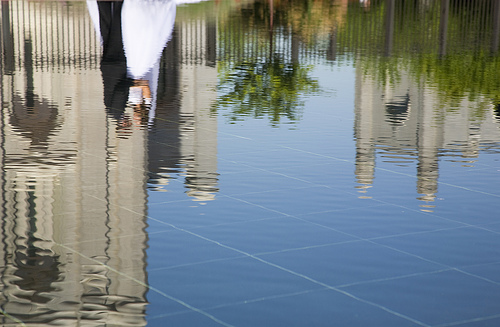
Aside from the fact that there were no less than 8 other weddings being photographed on the grounds while we were there, it was a very beautiful setting. The grounds provide many, many settings for beautiful bride & groom shots. But with so many couples being photographed at this location, the biggest challenge I see is making a shot unique.
However, working in the real estate industry I see a lot of Utah wedding photos (hanging on the walls of client’s homes). Judging by these photos I think a lot of newlyweds don’t want a unique photograph – they just want a beautiful capture of themselves in front of the temple.
Canon 5D, Canon 24-105 f/4L IS lens – 1/200 second, f/10, ISO 100
Labels: salt lake city, wedding
June 18th, 2007 12:00 am | Comments Off on
Reflections of a Utah Wedding
June 17, 2007
]]> 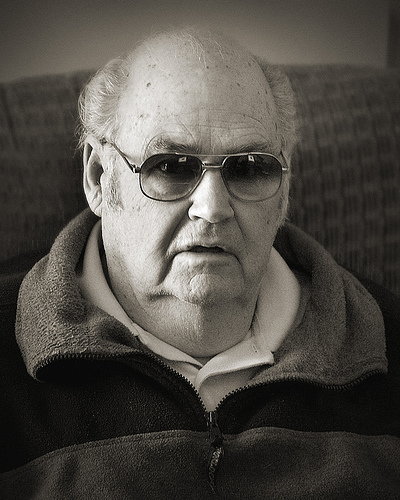
Canon 30D, Canon 24-105 f/4L IS lens – 1/15 second, f/4.5, ISO 400
LeggNet’s Digital Capture
© Rich Legg, Inc. All rights reserved.
June 17th, 2007 12:00 am | Comments Off on My Father
June 16, 2007
]]> 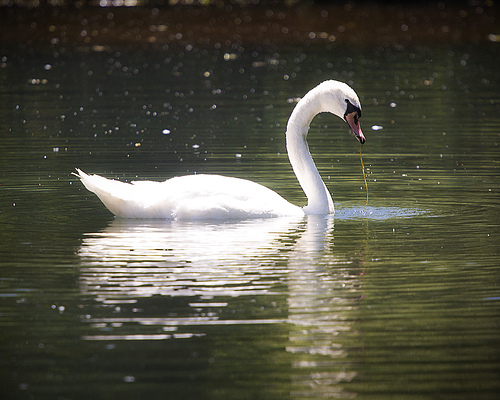
Canon 5D, Canon 70-200 f/4L with 1.4x extender – 1/200 second, f/5.6, ISO 160
Labels: animal, birds
June 16th, 2007 12:00 am | Comments Off on
On Golden Pond
June 15, 2007
]]> 
Thanks to my Flickr friend Jodi Tripp for pointing this fun website out.
June 15th, 2007 12:00 am | Comments Off on
Friday Fun
June 14, 2007
]]> 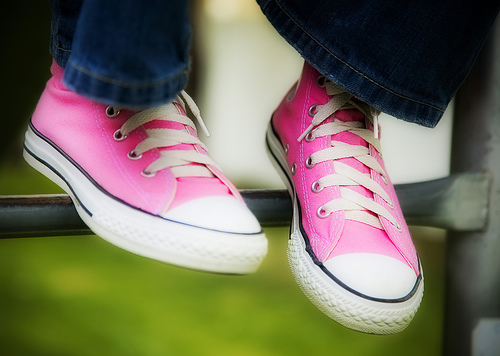
June 14th, 2007 12:00 am | Comments Off on
Chucks in Pink
June 13, 2007
]]> 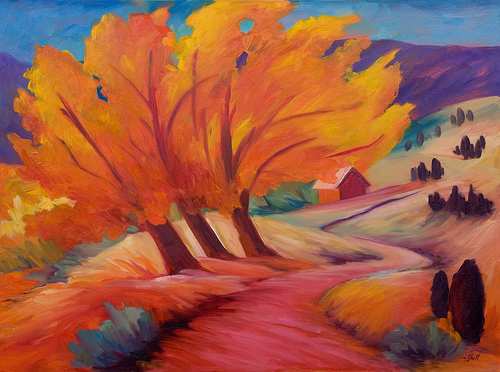
The challenge in photographing artwork is to provide balanced lighting with no reflections and to accurately represent the colors. To achieve this, I used multiple diffused monolights. Since I know the color temperature of the lighting, I was able to set the white balance to show the true colors of the paintings.
To view the complete set, visit www.legacyonephotography.com/april.
Canon 5D, Canon 24-105 f/4L IS lens – 1/40 second, f/10, ISO 160
LeggNet’s Digital Capture
© Rich Legg, Inc. All rights reserved.
June 13th, 2007 12:00 am | Comments Off on Photographing Oil Paintings
June 12, 2007
]]> 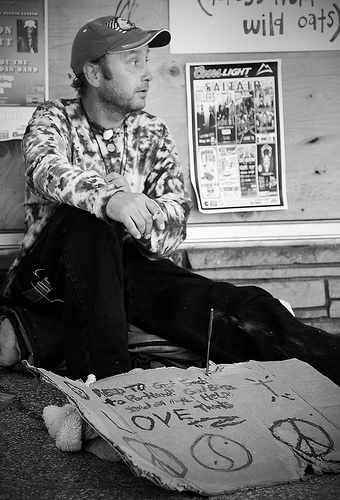
I usually find when I am walking around taking pictures that it is easy to strike up conversations with, and ultimately photograph, interesting people. I don’t know if it is the professional looking camera gear that makes people want to talk, but a lot of them do.
Today’s capture of Robert is an example of this. While photographing the bulletin board behind him, I asked how we was doing. We then chatted for a bit about some of the happenings in the area. After our conversation I asked if I could take his picture – he readily agreed.
Do you prefer to sneak your street photos of people or do you like the bolder “How you ‘doin?” approach?
Canon 5D, Canon 24-105 f/4L IS lens – 1/30, f/4, ISO 100
Labels: bw, salt lake city
June 12th, 2007 12:00 am | Comments Off on
Street Photography
June 11, 2007
]]> 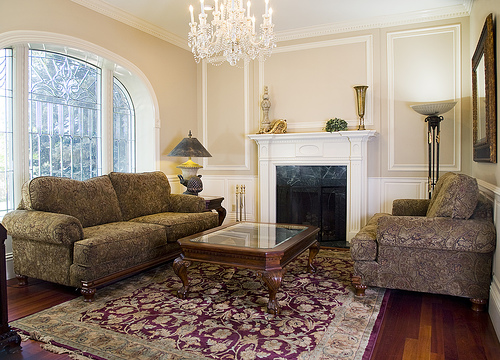
When capturing the interior, my goal was to light the rooms in a way to show the detail and accentuate the features without making it appear that strobes were used. With my friend Harley’s assistance, we used multiple lights to create the look.
This formal sitting room was lit with four lights. We placed a radio triggered strobe in the lamp on the right to make it appear like the lamp was lighting the room. There is a second radio triggered strobe in the back-left corner. To light the foreground we placed two lights with umbrella diffusers in the near corners.
I am fairly pleased with the result. There are a couple of shadows I would have liked to remove, but overall the lighting is fairly even and natural looking.
Canon 5D, Canon 24-105 f/4L IS lens – 1/15 second, f/5.6, ISO 100
Labels: buildings, photography, tutorial
June 11th, 2007 12:00 am | Comments Off on
Lighting a Historic Room
June 9, 2007
]]> 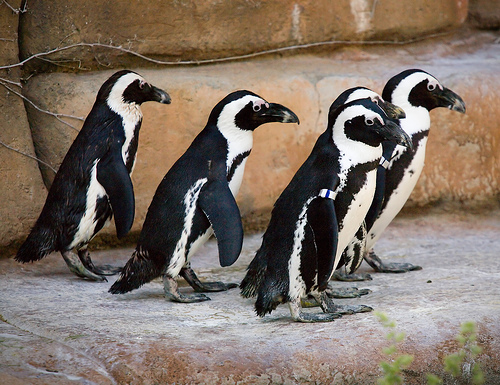
Canon 5D, Canon 70-200 f/4L lens with 1.4x extender – 1/400 second, f/7.1, ISO 160
Labels: animal, birds
June 9th, 2007 12:00 am | Comments Off on
Penguin Bowling
June 8, 2007
]]> 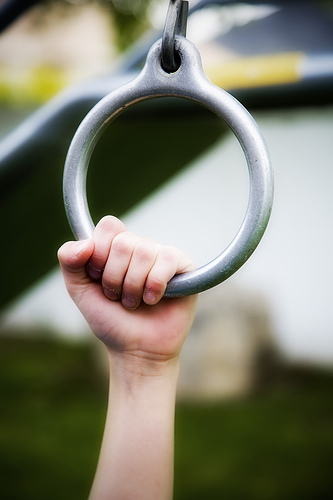
June 8th, 2007 12:00 am | Comments Off on
Seize the Moment
June 7, 2007
]]> 
You make a special trip back to the car for your camera so you can capture the vanishing point arrangement of shopping carts in front of the local Costco.
Canon 5D, Canon 24-105 f/4L IS lens, Canon 430EX strobe – 1/100 second, f/5, ISO 160
June 7th, 2007 12:00 am | Comments Off on
You Might Be A Photo Geek If . . .
June 6, 2007
]]> 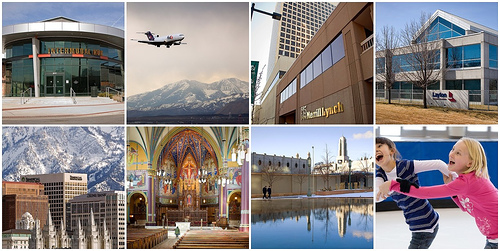
This is a reason that I am a proponent of the “Only Show Your Best school of thought, especially if you ever desire to sell your work. I didn’t adhere to this at first (as evident from some of my early images on Flickr), but over the past year I have worked on keeping this in mind when uploading. On a public forum, you never know who might be browsing the images and what impact they can have on future earnings.
Today’s image is a collage of some of the photos they have selected for use in the book. I like the diversity of the images, I think they have chosen well.
Labels: photography
June 6th, 2007 12:00 am | Comments Off on
Do you “Only Show Your Best”?
June 5, 2007
]]> 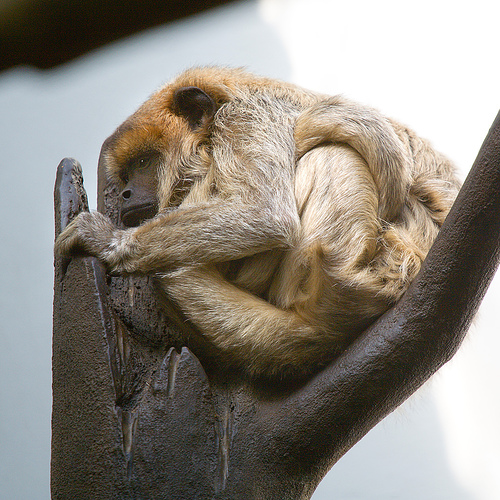
Labels: animal
June 5th, 2007 12:00 am | Comments Off on
One is the Loneliest Number
June 4, 2007
June 4th, 2007 12:00 am | Comments Off on Photography RSS Feeds
June 3, 2007
]]> 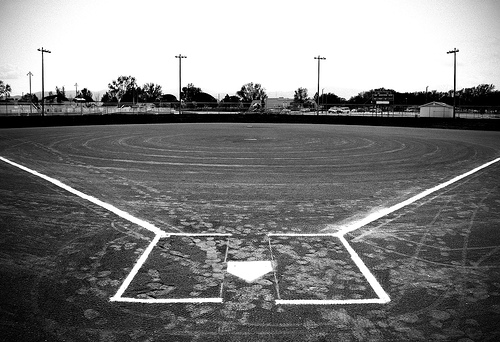
Soon though, I won’t be using the CHANNEL MIXER adjustment layer for my black & white conversions. My upgrade to Photoshop CS3 should arrive this week and I will begin using the new BLACK & WHITE adjustment layer feature. This is just one of the (many) reasons I opted for the upgrade.
Canon 5D, Canon 24-105 f/4L IS lens – 1/40 second, f/16, ISO 50
LeggNet’s Digital Capture
© Rich Legg, Inc. All rights reserved.
June 3rd, 2007 12:00 am | Comments Off on Play Ball
June 2, 2007
]]>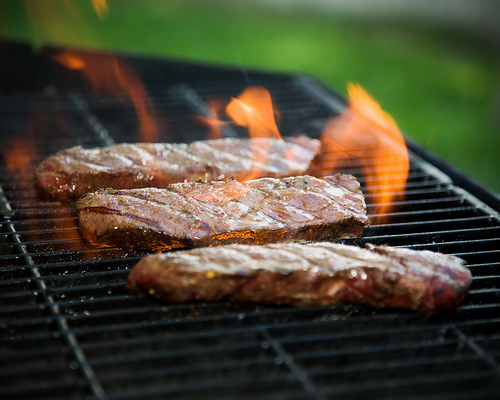
June 2nd, 2007 12:00 am | Comments Off on
Everybody’s Working for the Weekend
June 1, 2007
]]> 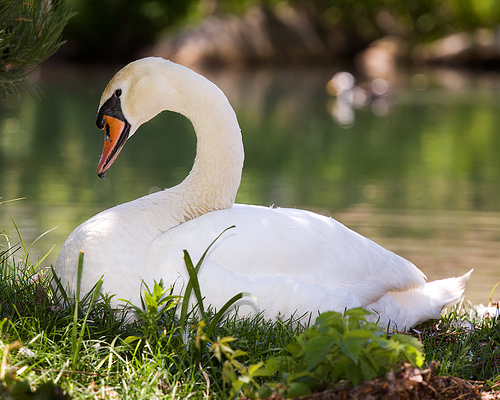
To get the shot I put on the longest lens I had with me (70-200 w/ 1.4x extender) and attached a strobe (Canon 430EX) to my camera. My purpose in using the strobe was threefold:
1. Fill in the shadows to create more even lighting
2. Create a Catchlight in the bird’s eye
3. Add separation between the subject and the background.
To achieve these effects without making the shot seem unnaturally lit, I dialed the strobe’s power setting to -1/3 f-stop from the camera’s metered exposure. Doing this allowed the natural light to combine with the strobe’s artificial light, creating a natural appearance to the subject while accomplishing the three objectives. The setting of -1/3 worked on this scene, but I sometimes use more or less power from the strobe on other scenes depending on the light.
Canon 5D, Canon 70-200 f/4L with 1.4x extender – 1/100 second, f/5.6, ISO 100
Labels: animal, birds, photography, tutorial
June 1st, 2007 12:00 am | Comments Off on
Using a Strobe in Daylight
May 31, 2007
]]> 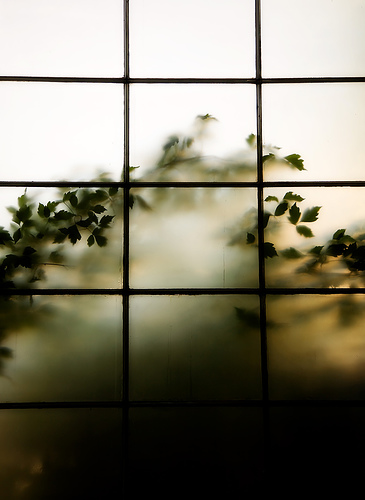
Labels: leaves
May 31st, 2007 12:00 am | Comments Off on
Frosted Panes
May 31, 2007
]]> 
LeggNet’s Digital Capture
© Rich Legg, Inc. All rights reserved.
May 31st, 2007 12:00 am | Comments Off on Frosted Panes
May 30, 2007
]]> 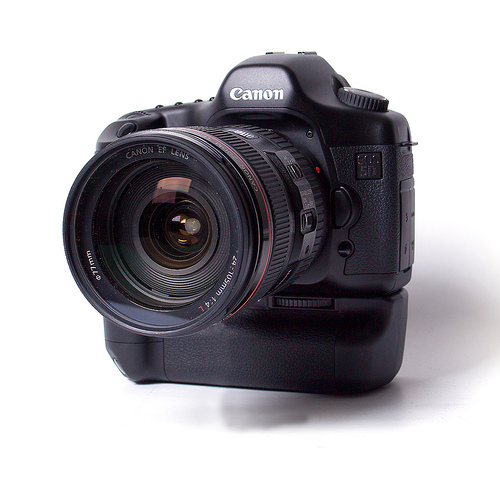
In my film shooting days of the eighties and early nineties, I was a large fan of Nikon. My primary cameras were the FE and FM2 models. I loved the sturdiness of these cameras plus they were “just right” in the size department. I shot literally thousands of photos between these two bodies and never had any type of failure. These were great cameras.
When I decided to make the move to digital SLRs a few years back, I did a bit of research. I knew that I would be “marrying” a manufacturer and wanted to make the right decision. It was a close call between Nikon and Canon, but Canon ultimately won. The deciding factor for me was the selection of bodies and the room to grow. This was a hard decision for me, since I had always been such a “Nikon Guy”.
Here it is a couple of years later and I am still pleased that I went with Canon. However, if I had gone with Nikon I am sure I would be nearly as happy. Nikon’s lack of a full-frame sensor is the only thing I think that would be holding me back.
Today, most of the photographers I know shoot either Nikon or Canon except for the occasional Olympus. The Canon Rebel line (especially the XTi) is very popular as is the Nikon D80. These are all great cameras.
Canon 30D, Canon 18-55 f/3.5-5.6 – 1/60 second, f/8, ISO 100
Labels: camera, photography
May 30th, 2007 12:00 am | Comments Off on
What do you shoot?
May 29, 2007
]]> 
This serves as another reminder of the power of the new media. One guy with a camera and a website (me!) is able to document an event and share it with the world in a very short period of time. As for the 337 Project, it was extremely creative and I’m glad so many people got to see a small piece of it through my camera lens and the power of the Internet.
May 29th, 2007 12:00 am | Comments Off on
Diggin’ the Visitors



























